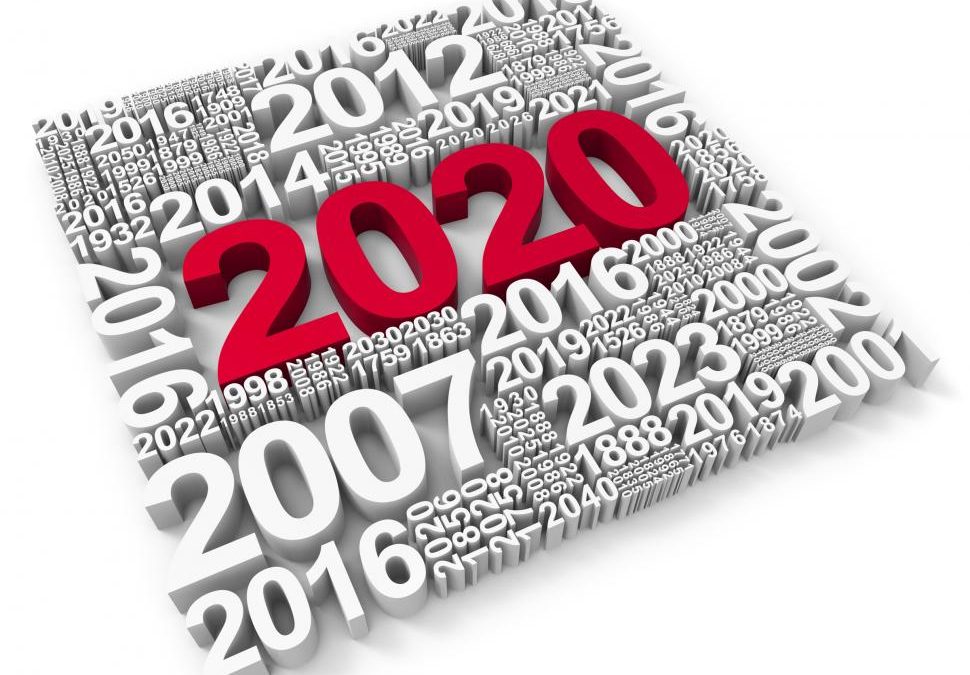New decades spark change and the need for improvement. With a new year, individuals and companies focus on adopting better habits and practices to achieve personal and organizational goals. In January, we are packing away last year’s records and papers for accounting and tax purposes. The immediate task is clearing out all the old and starting fresh.
This January is the start of a new decade—the 2020s. Consequently, many are packing away the past decade, including the highs and lows. We are now closer to the year 2040, which is often the end point for many industry and government-agency forecasts. Much changed over the past decade, especially in the areas of digitalization, connectivity, and intelligence tools. Microsoft, IBM, and Google launched cloud-computing technologies in early 2010. In less than 10 years, a massive wave of new platforms, architectural devices, and analytic tools enable the transition of businesses processes to the cloud. The next technological wave will build on IIoT and digitalization tools to capitalize on AI and machine learning.
Adapt or perish
Many organizations are examining how to efficiently make this transition, keep within budget, and achieve all goals. Looking forward, the emphasis on cloud platforms (Infrastructure as a Service) will increase.1
This not an unreasonable expectation. However in 2019, 70% of digitalization projects failed to achieve stated goals. Of the remaining projects, only 16% demonstrated improvements on performance.2
So, why are digitalization projects failing? Technology is not the roadblock. Many vendors and service providers offer high-quality products to retrofit data acquisition, analytics, reporting, and sharing services. Unfortunately, the best developed plans will not meet goals (and may even fail) if the company culture does not support the needs of employees, vendors, and customers.
Cultural issues kill any project
Consulting groups agree that more business processes will be handled by the cloud and IIoT. Digitalization changes in business systems involve acceptance by all users. Clear two-way communication of the project processes among affected teams and departments is necessary. Support systems must be in place to facilitate the new procedures and jobs.
Environment or company culture defines the health and success of any organization Before settling on the digitalization technologies, companies need to evaluate their culture and fix the “people issues” first. Communication and staffing issues are not new. However, as companies develop plans for 2020 and beyond, solving people problems is equally important as designing the project infrastructure or selecting technologies. The current workforce is diversified with four generations. All have different learning and training needs.
People issues are difficult to resolve
The mind set of project participants shapes and affects the relationships among teams and staff. Addressing the needs and concerns of different departments and employees is always a contributing factor to success. Relationship or people issues are tough to discern. Getting the right people on the digitalization teams will influence the project’s success. The opportunity to waste time, talent, and funds is always a major risk in any transformative project.
Technical skills are easy to gauge. In contrast, soft skills are tougher to measure. With IIoT projects, how the team members work within their group and support other teams are often determined by soft skills. Thomas Corley, author of “Rich Habits: The Daily Success Habits of Wealthy Individuals,” identified 12 habits that successful individuals practice regularly. They are all soft skills:3
Positive mental outlook
Gratitude
Encouraging attitude
Hard work ethics
Health oriented
Humility
Open to feedback
Loyalty
Authenticity
Influence
Future-oriented
Curiosity.
Fix the culture first

Clear two-way communication throughout the organization is a must to achieve any project goals–not technology
Working with different members of your group and other departments can be exhausting, especially if toxic people are involved. Not adding to the toxicity of the situation supports success for any endeavor. More than ever, developing and maintaining a positive company culture is needed. As the new decade begins, a positive step is adopting the 12 habits on personal and group levels. Recognizing the need for change is the first step to move to a change-ready organization.2
“Culture eats strategy for breakfast and everything else later,” says Peter Drucker, father of modern management.
As many leaders continue with digitalization plans, the first order of business is for the organization as a whole to adopt a “be open” philosophy. Developing a company culture that embraces the 12 habits can provide more quantitative benefits than any technology fix. The new decade drives and motivates making changes throughout any organization. As with any culture/people problems, improvement begins on the personal level and builds out.
LITERATURE CITED
1Andriole, S., “Splunk, Gartner-McKinsey, IT Infrastructure & Operations Predictions for 2020,” Dec. 16, 219, Forbes.com.
2Kitani, K, “The $900-billion reason GE, Ford and P&G failed at Digital Transformation,” Oct. 30, 2019, cnbc.com.
3Corley, T., “This the No. 1 habit self-made millionaires share—and it’s almost the most over looked, says money expert,”Oct. 14, 2019, cnbc.com.



Recent Comments